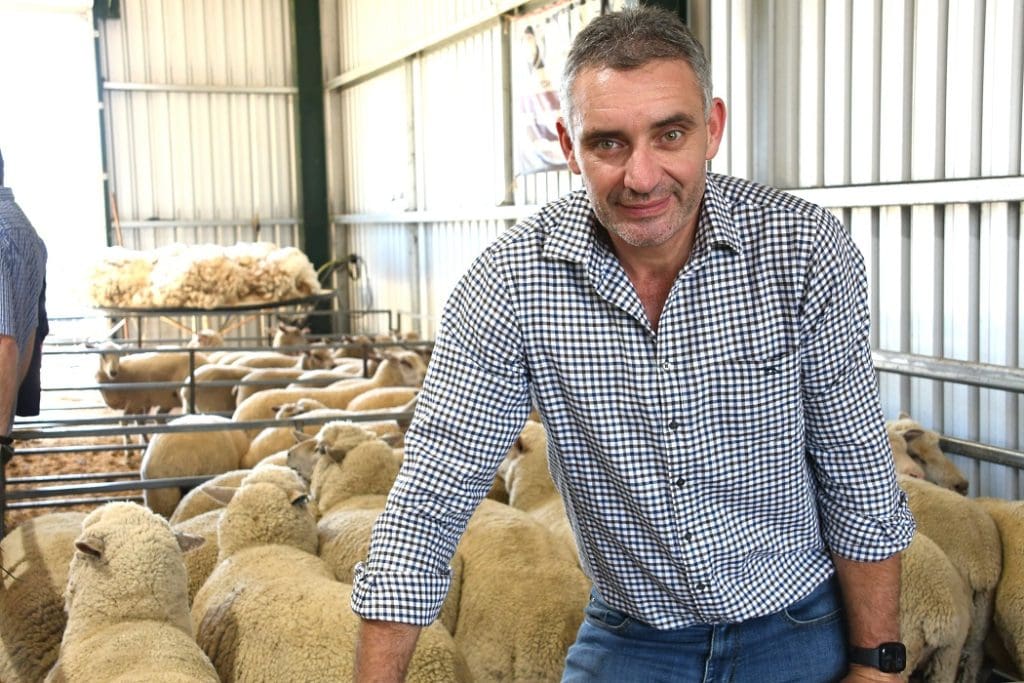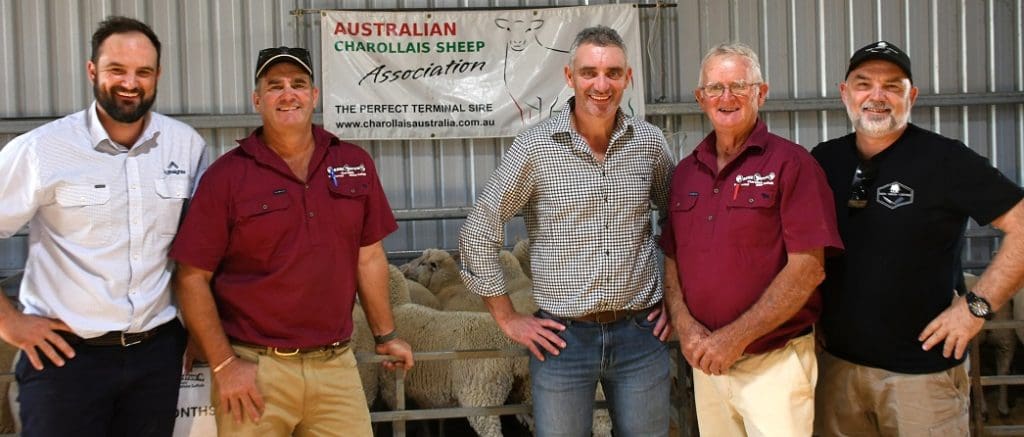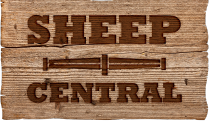
Butcher Justin Tassone from Suregood Foods at the Charollais sheep field day. Photo – Signature Ag.
AUSTRALIA’S Charollais sheep breeders were inspired to aim for their own lamb brand at a recent field day in New South Wales.
At the field day at the Rene stud, Culcairn, keynote speakers addressed about 100 producers keen to understand more about the Charollais sheep breed and how processors and food services businesses are targeting higher yielding well-muscled lambs for domestic and international markets.
Melbourne retail butcher Justin Tassone from Suregood Foods, a global domestic and export meat and commodity trading business, said the food service industry is demanding high quality lamb that is consistent and gives a great eating experience every time.
“The consumer wants a great dining experience every time, the food service sector wants a product that offers more saleable meat yield, but backed with a story of where it came from and how it was produced,” he said.
Mr Tassone said he has seen a lot of lambs come through boning rooms in his time, but the yield on the Charollais lambs he is seeing has opened up the conversations with producers about a potential brand going forward.
“A brand sells a product and our good butcher arms are seeking a product that is backed by a brand and they want to be associated with a grower, know where it comes from, how it was grown and how it was raised.
“Some of the marbling I am seeing from these Charollais lambs off grass is incredible,” he said.
Mr Tassone said in his experience growers have been able to increase their profitability with the utilisation of a brand and he sees this opportunity with the Charollais lamb, due to its carcase, yield and consistency.
Billy Cummins from Breakout River Meats at Cowra said his business had started to target Charollais, Primeline and composite lambs to get consistency through a carcase that yields “all the way from the legs through to the neck, and these lambs do that.”
“Our butchers want more meat than bone, more shape and yield and a carcase that is consistent every time so they can increase the amount of meat sold from that carcase.
“If you have a meat-based ram and cross it with a meat based ewe, you will get a meatier, high yielding lamb,” he said.
“The economics are starting to stack up, with less producers aiming for the export market and looking to turn lambs off at 22 to 23 kilograms carcase weight, as that is the sweet spot.”
Mr Cummins said when his father was a buyer he aimed to average 16kg dressed for a consignment. Now that number is 23 to 24kg as the industry has got heavier and is chasing more meat on bone to make all sectors more profitable.
Australian Charollais Sheep Association president Doug Mitchell told Sheep Central the field day at the Rene stud at Culcairn was the first step toward establishing a brand.
“That’s certainly on the table, that we look to starting a brand, but a lot of things have to come into play.”
Mr Mitchell said the breed certainly ticked all the boxes for desired carcase traits.
“So now we can go from there to the next step and get our head around supply.
“We’ve just got to work out where the supply will come from, the breed is in its early stages in lots of ways,” he said.
Mr Mitchell said he wasn’t aware that any Charollais lambs had been assessed objectively for intramuscular fat and the Rene stud sold about 150 rams a year, but it was not known how many commercial ewes are joined to Charollais rams in Australia.
Scott Mitchell from the Rene stud said a comparison of the gross margin/hectare of the three stud enterprises on farm, showed that his larger White Suffolk flock with a ram price of $1000-$1200 returned $300 per hectare, the Poll Dorsets with a ram price of $1200-$1600 was $700 per hectare, but the Charollais flock blew them away at $1500 per hectare with an average ram price of more than $1800, including eight month-old ram lambs at $1500. The efficiency of the Charollais sheep was a big factor in the gross margin differences, he said, and believes the stocking rate efficiency of Charollais can be duplicated in a commercial
Mr Mitchell said Charollais cross lambs out of 19 micron Merino ewes produced lambs shorn at 5-6 months with a 21 micron fleece and the 17 month-old crossbred ewes at their second shearing after 10 months growth grew a three kilogram 23.1 micron fleece that yielded 64.5pc and sold for 667c/kg greasy, or about $19/head.
“It’s saleable and you are actually paying for the shearing — it’s huge.”
The carcases of second cross Charollais lambs from the crossbred ewes had yielded 52.5-53pc and had sold for up $250 in saleyards, he said.
Mr Mitchell said he has shown he can run at last 15pc more of the smaller frame Charollais cross ewes per hectare than traditional first cross Border Leicester-Merino ewes.
Mr Percy said six to 10 years ago, you were turning a 15 percent profit on a farm, now that is eight to 10pc at best, so you really have to analyse what is the most profitable enterprise on your farm to be sustainable.
At the field day, finance expert and consultant Benjamin Percy, Ag Insights, Albury, told the audience it was about understanding and being outcome focused on your farm and knowing what you are producing per hectare in each enterprise in the production system.
Mr Percy said declining profits on farms meant producers have to analyse what is the most profitable enterprise on their farms to be sustainable.
Retail butcher Glen Stephens from Bendigo said he recently did some trials for the Rene stud on their commercial Charollais lambs.
“I’m getting a three kilogram boned and rolled leg off a 28kg dressed lambs, while other traditional lambs only produce around 2.4kg.”
He said he was processing 50 bodies a week, 52 weeks of the year and that was a lot of extra meat alone due to the yield just on the legs, let alone the rest of the carcase.
Mr Stephens had three lambs on display from recent lambs processed by the Mitchells, with one four month-old lamb yielding 58.4pc from a 25.2kg carcase.

At the Charollais field day, from left, were Ben Percy, Ag Insights; Scott Mitchell, Rene Stud; Justin Tassone, Doug Mitchell and Glen Stephens. Photo – Signature Ag.

HAVE YOUR SAY